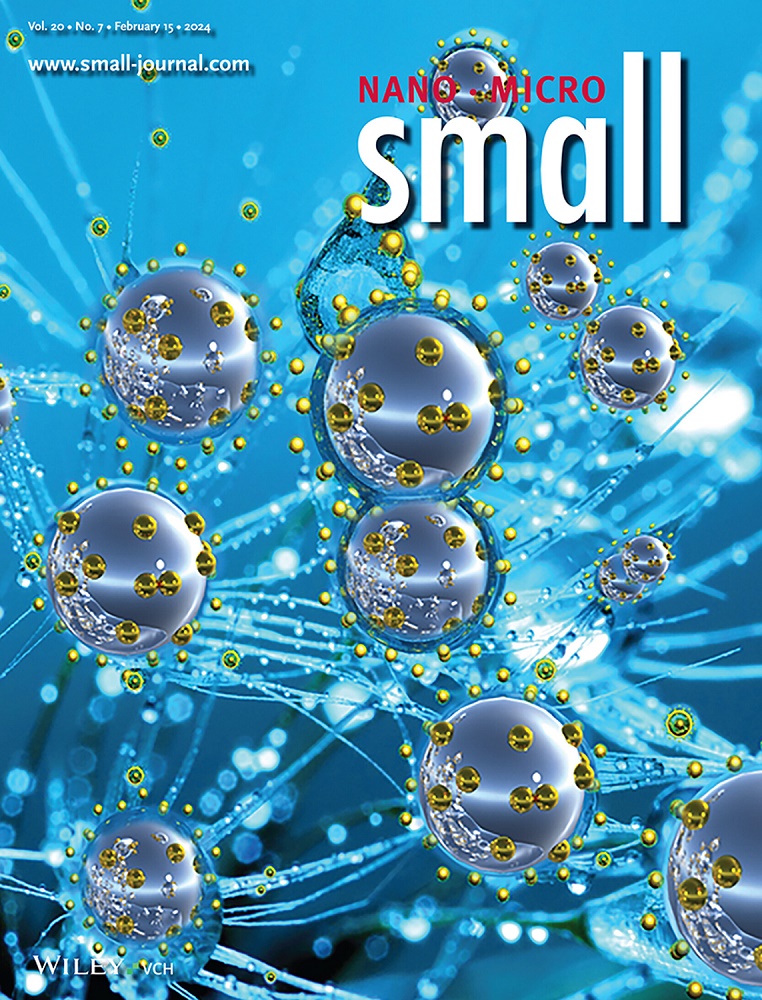UIO - 66/多孔石墨烯作为锌金属阳极表面保护层的稳定性研究
IF 13
2区 材料科学
Q1 CHEMISTRY, MULTIDISCIPLINARY
引用次数: 0
摘要
锌金属阳极在水基锌离子电池(AZIBs)中的实际应用还面临着锌枝晶生长、析氢反应(HER)和界面副反应等关键问题。为了解决这些问题,合理设计并合成了分层结构的UIO - 66/多孔石墨烯(UIO - 66/rhG0.1)复合材料,通过在多孔石墨烯支架上原位生长UIO - 66纳米晶体作为人工保护层。UIO‐66/rhG0.1将UIO‐66与多孔约束和hG与多孔结构协同结合,实现离子通量均匀化和电场再分布的双重调节。结果表明,优化后的对称电池在2700 h内具有优异的循环稳定性,超低电压迟滞为44 mV,有效抑制了Zn枝晶和HER的形成。当Zn@UIO‐66/rhG0.1与NaV3O8阴极配对时,满电池在500次循环中保持了62.4%的高初始容量(220.8 mAh g−1),优于裸Zn阳极(59.4%和114.5 mAh g−1)。本文章由计算机程序翻译,如有差异,请以英文原文为准。
UIO‐66/Holey Graphene as a Surface Protective Layer for the Stabilization of Zn‐Metal Anode for High Performance Aqueous Zinc Ion Batteries
The practical use of Zn metal anode for aqueous zinc‐ion batteries (AZIBs) still face critical issues of the growth of zinc dendrite, hydrogen evolution reaction (HER), and interfacial side reactions. To address these issues, a hierarchically structured UIO‐66/holey graphene (UIO‐66/rhG0.1 ) composite is rationally designed and synthesized as an artificial protective layer via in situ growth of UIO‐66 nanocrystals on holey graphene scaffolds, which is derived from spent lithium‐ion battery graphite. The UIO‐66/rhG0.1 synergistically combines of UIO‐66 with the porous confinement and hG with holey structures, enabling dual regulation of ion flux homogenization and electric field redistribution. As a result, the optimized symmetric cell achieves exceptional cycling stability over 2700 h with an ultralow voltage hysteresis of 44 mV, effectively suppressing the formation of Zn dendrites and HER. When the Zn@UIO‐66/rhG0.1 is paired with an NaV3 O8 cathode, the full‐cell retains a high 62.4% initial capacity (220.8 mAh g−1 ) over 500 cycles, outperforming bare Zn anodes (59.4% and 114.5 mAh g−1 ).
求助全文
通过发布文献求助,成功后即可免费获取论文全文。
去求助
来源期刊

Small
工程技术-材料科学:综合
CiteScore
17.70
自引率
3.80%
发文量
1830
审稿时长
2.1 months
期刊介绍:
Small serves as an exceptional platform for both experimental and theoretical studies in fundamental and applied interdisciplinary research at the nano- and microscale. The journal offers a compelling mix of peer-reviewed Research Articles, Reviews, Perspectives, and Comments.
With a remarkable 2022 Journal Impact Factor of 13.3 (Journal Citation Reports from Clarivate Analytics, 2023), Small remains among the top multidisciplinary journals, covering a wide range of topics at the interface of materials science, chemistry, physics, engineering, medicine, and biology.
Small's readership includes biochemists, biologists, biomedical scientists, chemists, engineers, information technologists, materials scientists, physicists, and theoreticians alike.
 求助内容:
求助内容: 应助结果提醒方式:
应助结果提醒方式:


